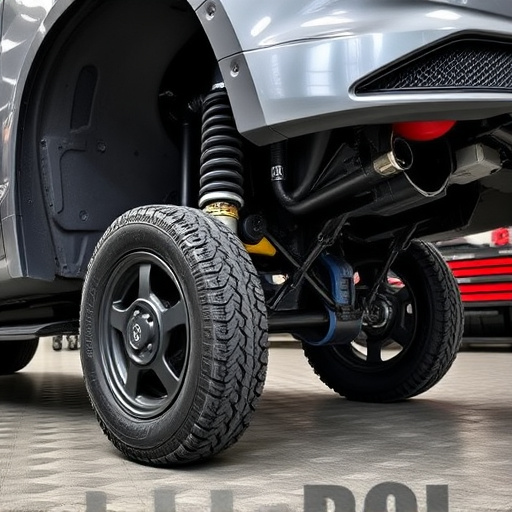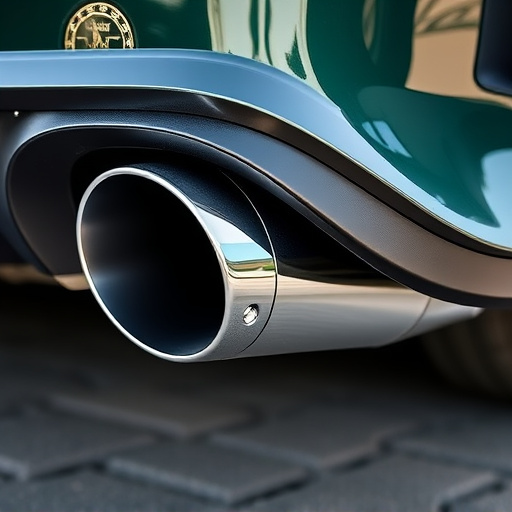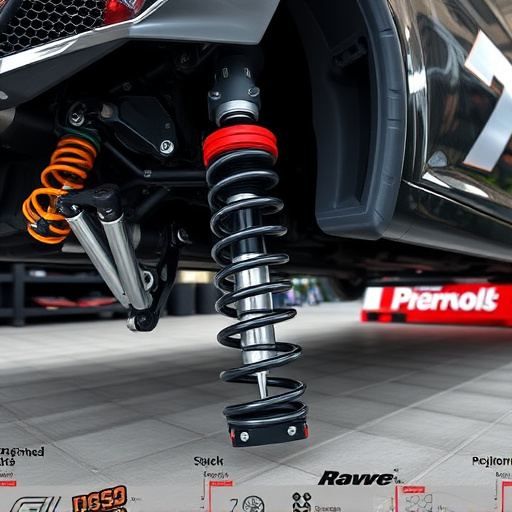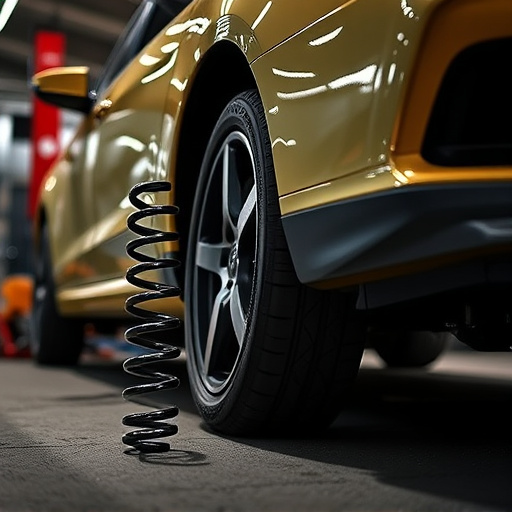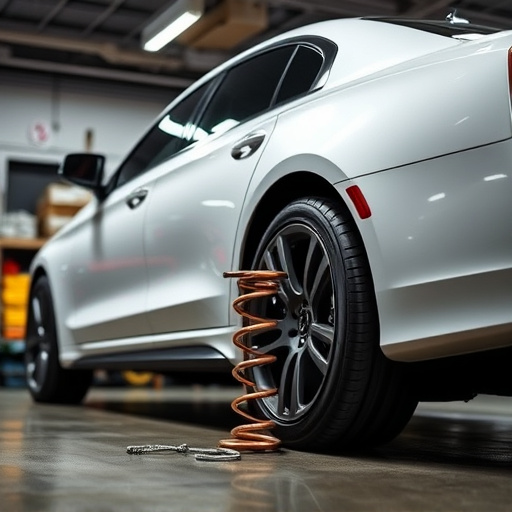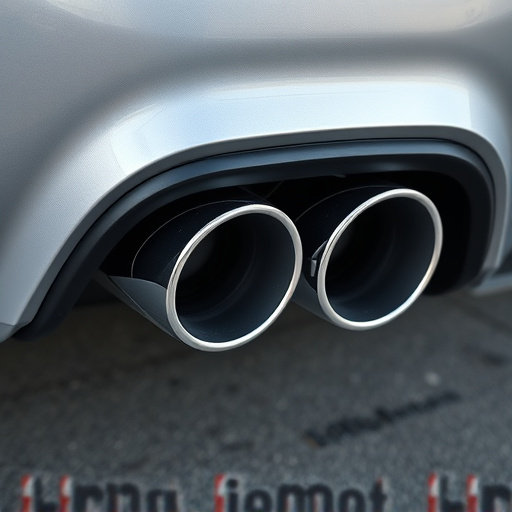Mufflers are crucial for vehicle exhaust systems, reducing noise and enhancing performance. Direct-fit mufflers offer easy installation and guarantees, while aftermarket models allow customization of exhaust notes. Muffler selection depends on compatibility, driving style, local regulations, and vehicle specifications. Installation at home is feasible with proper tools and knowledge, involving removal of old muffler, cleaning, and following manufacturer instructions. Regular maintenance ensures safety, optimal performance, and extended brake/air intake system lifespans, often facilitated by a trusted muffler parts store.
Vehicle owners, it’s time to unlock your car’s true potential by understanding the humble yet vital muffler. This essential component isn’t just about noise reduction; it optimizes exhaust flow, enhances performance, and contributes to fuel efficiency. In this guide, we’ll navigate through the maze of muffler types, help you make informed choices at the local muffler parts store, and provide a step-by-step installation and maintenance tutorial for DIY enthusiasts.
- Understanding Muffler Types and Their Functions
- Factors to Consider When Choosing a Muffler
- How to Install and Maintain Your New Muffler at Home
Understanding Muffler Types and Their Functions
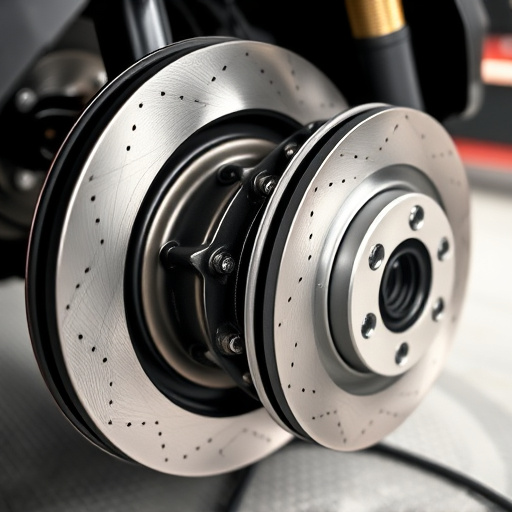
Mufflers are an essential component of a vehicle’s exhaust system, designed to reduce noise pollution and enhance the overall performance. There are primarily two types: direct-fit and aftermarket. Direct-fit mufflers are manufactured as integral parts of the exhaust system, typically requiring no additional installation work. They offer reliable performance and are often backed by the vehicle’s manufacturer. Aftermarket mufflers, on the other hand, are separate components that can be easily installed at a muffler parts store or workshop. These are popular among vehicle owners looking to customize their exhaust notes and improve overall performance.
Aftermarket mufflers come in various designs, including glasspack, chambered, and straight-through types, each offering unique noise reduction characteristics. Some even feature advanced technologies like active sound cancellation, which actively modifies the exhaust note for a more refined and tailored sound. For those seeking enhanced braking power and control, performance brake components, including coilover kits, can be integrated into the overall modification process, further tailoring the vehicle’s handling and driving experience.
Factors to Consider When Choosing a Muffler
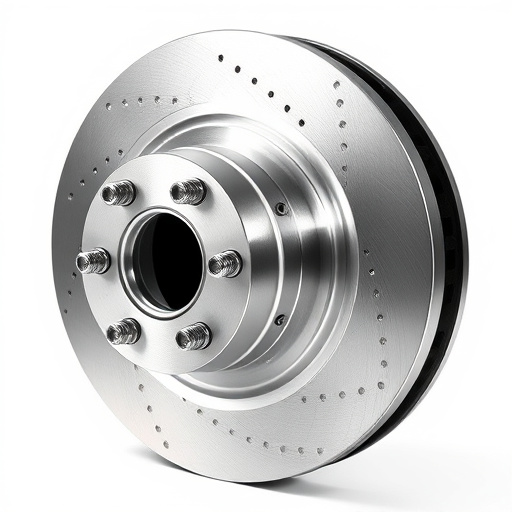
When choosing a muffler for your vehicle, several factors come into play. Firstly, consider the type of exhaust system you have – whether it’s a direct-fit replacement or requires custom tailoring. This is crucial as it ensures compatibility and optimal performance. Secondly, think about your driving style and needs. If you’re a frequent off-roader, durable suspension components might be more suitable, while city drivers may prioritize mufflers offering better fuel efficiency.
Additionally, the size and shape of your vehicle’s exhaust pipes will dictate the physical dimensions of the muffler, ensuring a seamless fit. Remember to check local regulations regarding noise levels; some areas require mufflers that meet specific decibel standards. Lastly, visit a trusted muffler parts store to consult with experts who can guide you based on your vehicle’s make and model, as well as your desired performance characteristics.
How to Install and Maintain Your New Muffler at Home
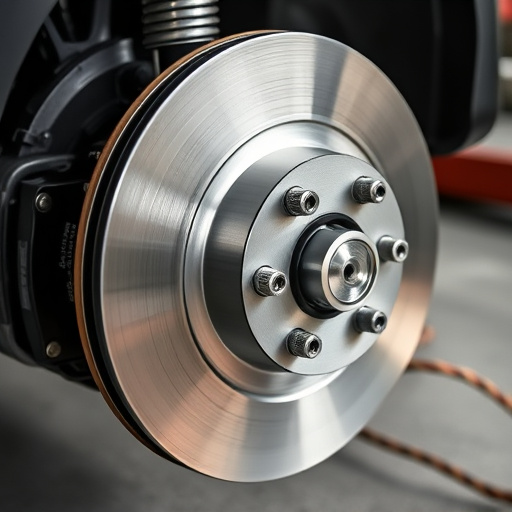
Installing and maintaining your new muffler at home is a relatively straightforward process, but it requires the right tools and knowledge. Before beginning, ensure you have all the necessary muffler parts from a reputable muffler parts store. Gather items like gaskets, bolts, and any other hardware included in your purchase. Park your vehicle on a level surface, engage the parking brake, and allow enough space to work safely around the exhaust system.
Begin by removing the old muffler, carefully detaching any hangers or brackets. Inspect the existing exhaust system for damage and ensure all components are in good condition. Clean the area thoroughly to prevent debris from interfering with the new muffler’s installation. Follow your vehicle manufacturer’s instructions or consult a repair manual for specific steps related to your model. Once installed, test drive your vehicle to ensure optimal performance and noise levels. Regular maintenance involves checking for loose connections, replacing gaskets if necessary, and keeping an eye on any signs of wear or damage in both the muffler and cat-back exhaust system. Remember, proper maintenance enhances safety and extends the lifespan of your vehicle’s brake components and air intake systems.
Choosing the right muffler is not just about sound reduction; it’s an investment in your vehicle’s performance, fuel efficiency, and longevity. By understanding different muffler types, considering factors like material quality, brand reputation, and fitment, and learning basic installation and maintenance practices from a trusted muffler parts store, you can make an informed decision that enhances both the health of your car and the driving experience.

